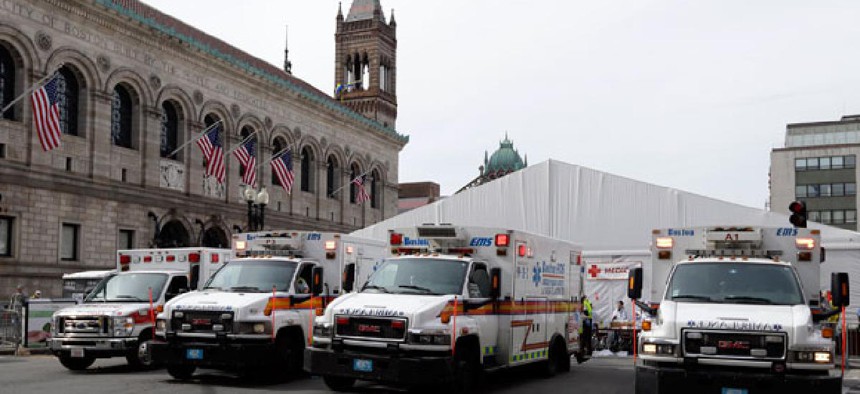Medical Advances From Iraq and Afghanistan Might Help Save Bombing Victims' Limbs

Ambulances wait near the medical tent at the Boston Marathon Monday. Elise Amendola/AP
It is possible to replant extremities with lengthy procedures.
The doctors fighting to save the lives — and limbs — of those wounded in the Monday's bombing will have the benefit of recent major advances, many of them results of medical experience during the Iraq and Afghanistan wars, in what is called limb salvaging. The latest casualty figure has 183 injured in the attack (fortunately, 89 have now been released), and at least 10 of them have had a limb amputated, according to CNN. More will probably be added to that toll: at least nine of the 28 people sent to the Brigham and Women's Hospital have "limb threatening" wounds, according to a hospital spokesman.
"In general due to the advances of microsurgery, it is possible to replant extremities," Dr. Linda Cendales, an assistant professor at Emory told The Atlantic Wire. That is the good news. The bad news is that the procedures can take a very long time and might not be worth it for some. This is how that works:
If the right conditions are met—a big if—then the patient undergoes replantation surgery. First and foremost the patient has to be stabilized. ("Life over limb," Cendales repeated more than once.) At that point, the doctor evaluates the state of the amputated segment, the limb, the type of damage, and the injury. If it's damage the doctors think they can fix, the patient then undergoes hours worth of surgery, in which surgeons mend bones with plates and screws and reconnect tendons, nerves, vessels, and skin. Afterwards, for precision, doctors will then further mend those tissues under a microscope.
NEXT STORY: Another take on the telework debate





